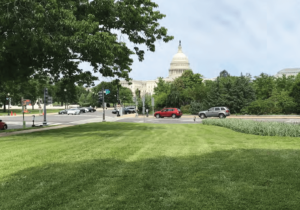It shouldn’t come as a surprise that New York City’s subway system isn’t the only one on the verge of failing: The Washington Metropolitan Area Transit Authority (WMATA) will review a 2021 budget proposal this Friday that could, barring federal aid, slash service, jobs, and entire stations from the Metro, and nearly half of the bus lines in Washington, D.C.
The agency’s $500 million budget gap, while notably not as massive as its New York-based counterpart (the MTA owes $16.4 billion), is enough that the WMATA is struggling to figure out what to cut. The fiscal year begins July 2021, and if the proposal before the board passes, the following changes could be coming:
- The elimination of weekend service. With weekend rail ridership at only 20 percent of what it was in 2019 (89,000 rides as of the weekend of November 28, about the same as the previous week), the agency is looking to cut it entirely. Not only would this be a disaster for working-class commuters and college students (once they return for in-person learning) but could lead to putting more cars on the road and further increasing carbon emissions.
- Temporarily closing the 19 stations already shuttered during the pandemic, including the College Park station, a location experiencing low traffic because university students are all learning remotely. The stations on the chopping block are all either within a mile of other extant Metro stations, or have experienced low ridership levels during the pandemic, with the WMATA promising to reopen them once their financial situation improves.
- Ending Metro rail service at 9:00 p.m. every night instead of 11:00 p.m.
- Slashing bus service from 60 to 41 routes.
- Cutting Metro service to one train every 30 minutes, except where lines overlap and more coverage can be provided.
- Laying off an additional 2,400 workers when, as DCist pointed out, another 1,000 jobs may be cut, totaling on-third of the WMATA’s workforce.
- Negotiating with the union to implement pay freezes and lower wages to head off the worst of the layoffs.
Obviously this, much like the MTA’s budget dilemma, could potentially send the Metro system into a death spiral if ridership and fare collection declines even further as a result of the cuts. The Metro system and the city’s mass transit connectivity, previously a lifeline for tri-state commuters around D.C., was, after all, one of the reasons that Amazon chose to place their HQ2 in nearby Arlington, Virginia.
“From where I sit, it is clearly the toughest decisions that we’ve ever had to make,” the WMATA’s General Manager, Paul Wiedefeld, reportedly told reporters when the budget was unveiled. “Any cut is painful. That’s just the reality of what we are up against right now. So we don’t take it lightly.”
Washington, D.C. Mayor Muriel Bowser released a statement on Twitter soon after the budget’s announcement yesterday, calling on the federal government to move quickly to release another stimulus package and bail out the WMATA. The agency had received $877 million through the CARES act in May but will run through that money by the time fiscal year 2021 rolls around. Still, even under a President-elect Joe Biden, the ailing Metro could have a hard time seeing any extra funding if Republicans end up controlling the Senate next year.











